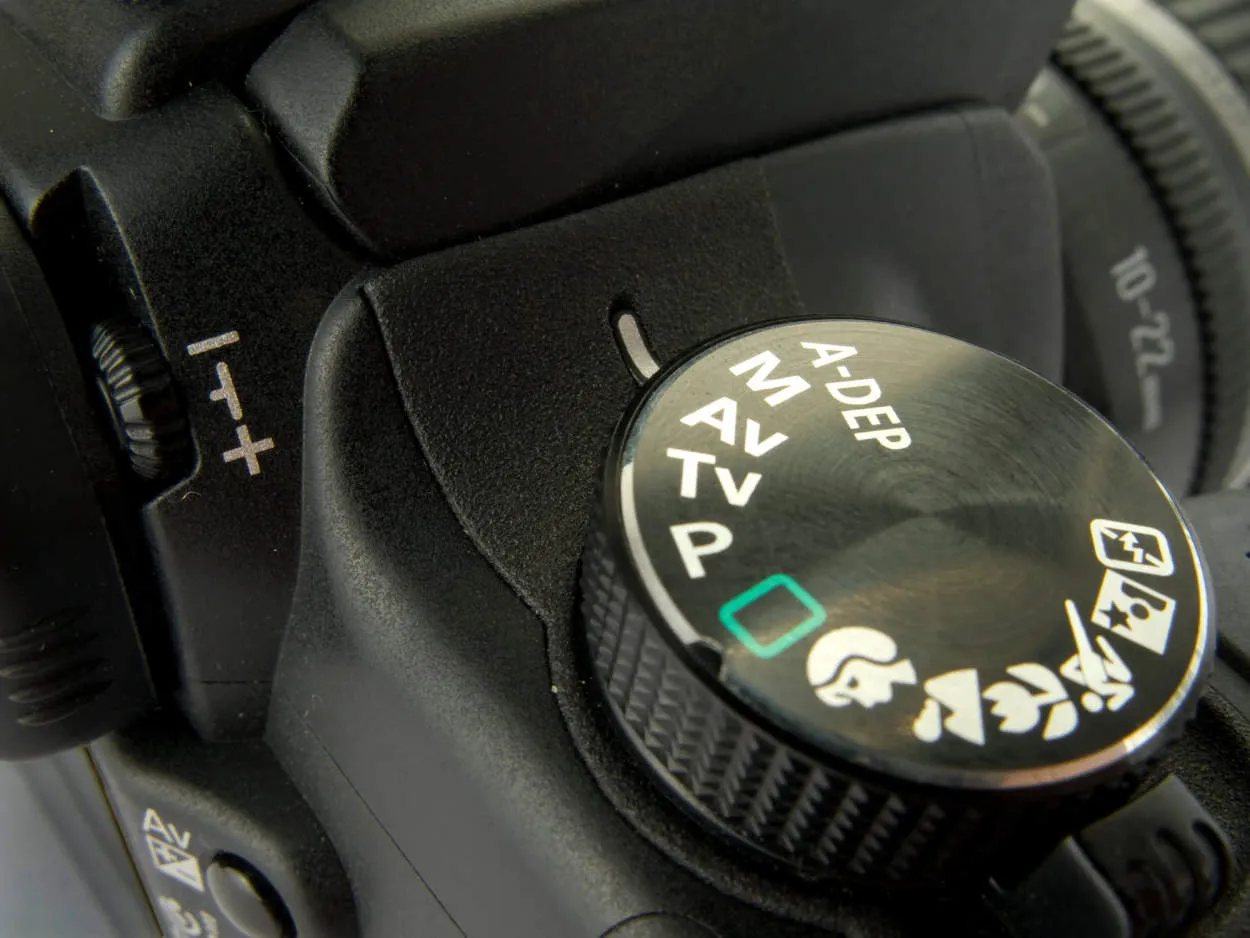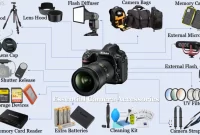When it comes to photography, understanding camera modes and settings is crucial for capturing the perfect shot. Whether you’re a beginner or an experienced photographer, knowing how to make the most of these features can take your images to the next level. In this article, we will explore the various camera modes and settings and provide valuable tips for maximizing their potential.
Understanding the Exposure Triangle
In the world of photography, understanding the exposure triangle is crucial for capturing stunning images and mastering camera modes and settings. The exposure triangle consists of three key elements: aperture, shutter speed, and ISO. These three components work together to determine the exposure of an image, affecting its brightness, sharpness, and overall look.
Aperture refers to the opening in the lens that controls the amount of light entering the camera. By adjusting the aperture, you can control the depth of field, which determines how much of the image is in focus. A wider aperture (smaller f-number) lets in more light and creates a shallow depth of field, ideal for portraits or subjects where you want to separate the foreground from the background. On the other hand, a narrower aperture (larger f-number) allows less light and results in a wider depth of field, suitable for landscape photography.
Shutter speed refers to the length of time the camera’s shutter remains open, determining the amount of light that reaches the camera’s sensor. A faster shutter speed freezes motion and is useful for capturing sports or wildlife shots. Conversely, a slower shutter speed creates motion blur, which can be employed creatively for capturing moving subjects or creating a sense of movement in landscapes.
ISO measures the camera’s sensitivity to light. Lower ISO settings (e.g., 100) are less sensitive to light and produce cleaner, less noisy images, ideal for shooting in bright conditions. Higher ISO settings (e.g., 800 or above) are more sensitive to light and are suitable for low-light situations. However, higher ISO settings may introduce noise or grain to the image.
Understanding how these three elements interact enables you to make informed decisions when selecting camera modes and settings. By experimenting with different combinations of aperture, shutter speed, and ISO, you can achieve the desired exposure for your images. Remember, there is no one-size-fits-all approach, as each situation requires its own set of settings to achieve the desired result.
Exploring Different Scene Modes
When it comes to photography, understanding the various scene modes on your camera can dramatically improve your results. These modes are designed to optimize settings specific to different scenarios, allowing you to capture the best possible image with minimal effort.
The “Portrait” mode, for instance, enhances the subject’s features by blurring the background and emphasizing skin tones. It works great for capturing stunning close-ups of people. On the other hand, the “Landscape” mode adjusts settings to optimize depth of field and color saturation, delivering breathtaking wide-angle shots of scenic vistas.
If you’re interested in shooting action-packed moments, the “Sports” mode will be your go-to. It boosts shutter speed to freeze the action, allowing you to capture crisp images of fast-moving subjects, like sports events or wildlife in motion.
For low-light situations, the “Night” mode comes in handy. It automatically adjusts settings to reduce noise and capture the details even in the absence of ample light. It’s perfect when photographing cityscapes after sunset or capturing the stars in the night sky.
Other useful scene modes include “Macro” for close-up shots of small subjects, “Sunset” for capturing the warm tones and rich colors of sunsets, and “Fireworks” for capturing the vivid bursts of fireworks displays.
By exploring and experimenting with the various scene modes available on your camera, you’ll be able to unleash your creativity and capture stunning images in any situation. Remember, each mode is designed to optimize specific settings, so don’t hesitate to switch between them to get the best results for each scene.
Utilizing Artistic Filters
When it comes to making the most of camera modes and settings, one aspect that shouldn’t be overlooked is the use of artistic filters. These filters allow photographers to add a creative touch to their images, enhancing the overall look and feel.
Artistic filters come in a wide range of options, from vintage and black-and-white effects to more dramatic ones like fisheye and miniature. By experimenting with different filters, photographers can transform ordinary scenes into extraordinary works of art.
One popular use of artistic filters is to create stunning landscapes. Applying a polarizing filter can deepen the colors of the sky and make clouds appear more defined, while a graduated neutral density filter can balance the exposure between the bright sky and the darker foreground, resulting in a well-balanced and visually pleasing image.
Portraits can also benefit from artistic filters. Soft focus filters can add a dreamy and romantic atmosphere, while vignetting filters can draw attention to the subject and create a sense of intimacy. These filters can help photographers convey specific moods and emotions in their portraits.
Additionally, artistic filters can be used to emphasize certain elements in a photograph. For example, a selective color filter can make a specific object stand out by desaturating the rest of the image, creating a striking visual contrast. This technique is often employed to highlight a particular subject or add a touch of whimsy to an otherwise ordinary composition.
Overall, utilizing artistic filters opens up a world of creative possibilities for photographers. By exploring and experimenting with different filters, photographers can add unique and captivating elements to their images, enhancing their visual impact and storytelling. So, next time you’re out shooting, don’t forget to unleash your creativity with artistic filters!
Mastering White Balance
When it comes to making the most of camera modes and settings, one aspect that should not be overlooked is white balance. White balance refers to the adjustment of colors in your photos to accurately represent the true colors of the scene you are capturing.
Understanding and mastering white balance is crucial in photography as it can greatly influence the overall mood and tone of your images. Here are a few key points to consider:
-
Auto white balance (AWB)
Most cameras have an AWB mode that automatically adjusts the white balance based on the lighting conditions. While this mode is convenient, it may not always produce the desired results. It is recommended to experiment with other white balance settings for more control.
-
Preset white balance
Many cameras offer preset white balance options such as daylight, cloudy, flash, shade, and tungsten. These presets are a good starting point, especially when shooting in specific lighting conditions. Try different presets to find the one that best matches the scene.
-
Custom white balance
For more accurate color reproduction, you can manually set the white balance using a gray card or a neutral object in the scene. This ensures that the colors are true to life and eliminates any unwanted color casts.
-
White balance in post-processing
If you shoot in RAW format, you have the flexibility to adjust the white balance during post-processing. Software like Adobe Lightroom or Capture One allows you to fine-tune the white balance to achieve the desired look.
By understanding and mastering white balance, you can enhance the overall quality and impact of your photographs. Experiment with different white balance settings and techniques to achieve the desired results in your images.
Conclusion
In conclusion, understanding and utilizing different camera modes and settings is essential for capturing high-quality photographs. Whether it’s adjusting exposure, selecting the appropriate focus mode, or experimenting with creative filters, photographers can enhance their skills and achieve their desired results by mastering these features. By exploring the possibilities that camera modes and settings offer, photographers can unleash their creativity and capture memorable moments with precision and style.




